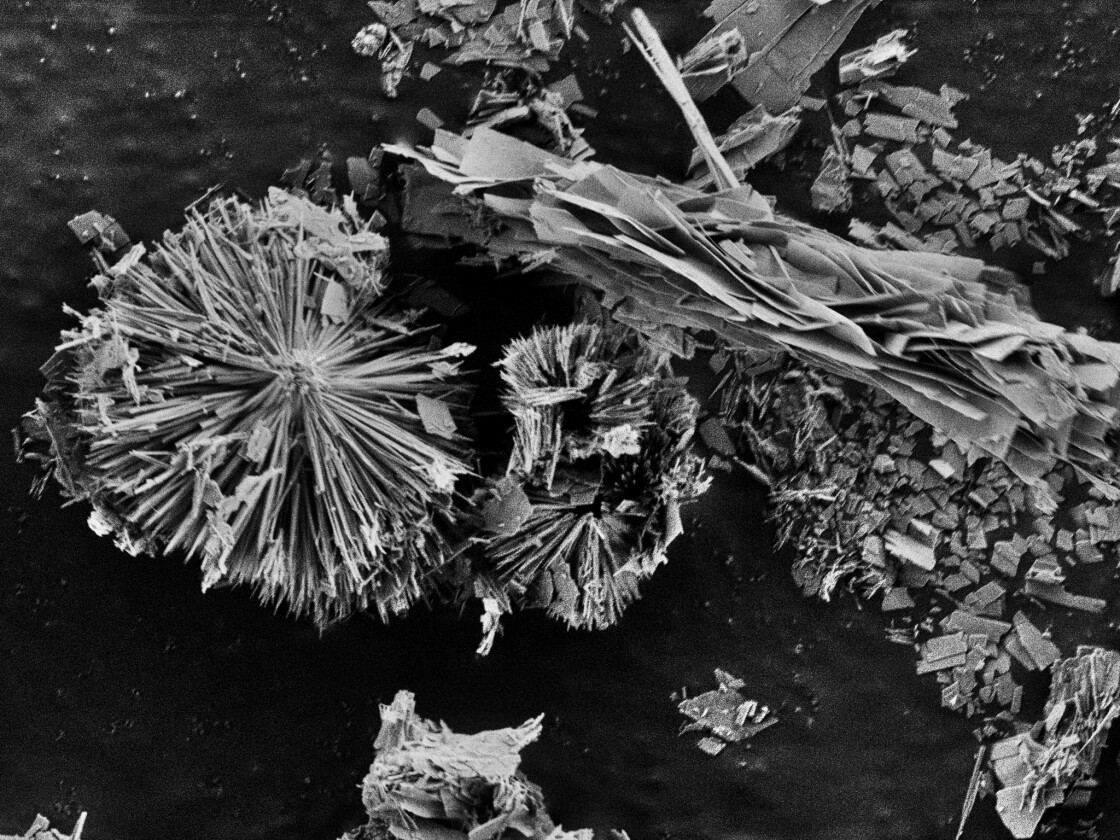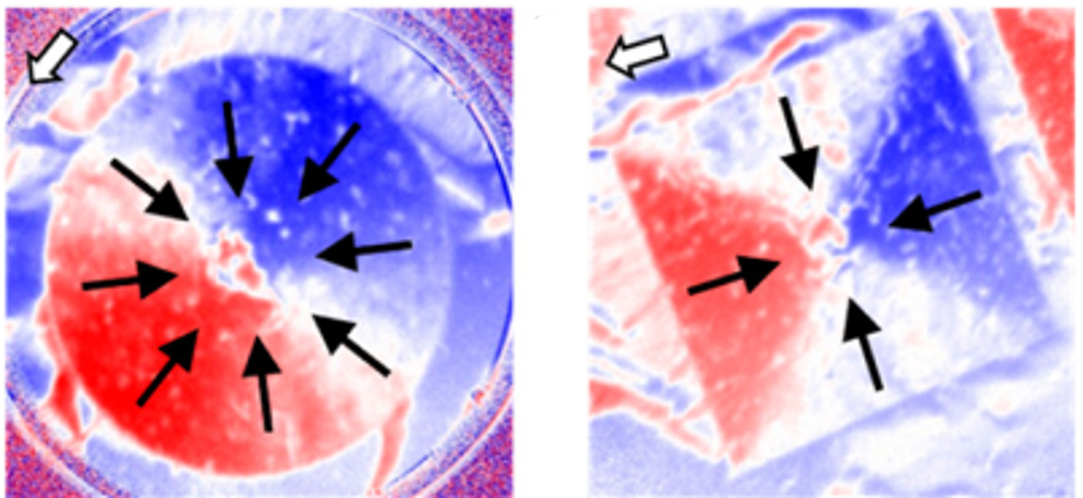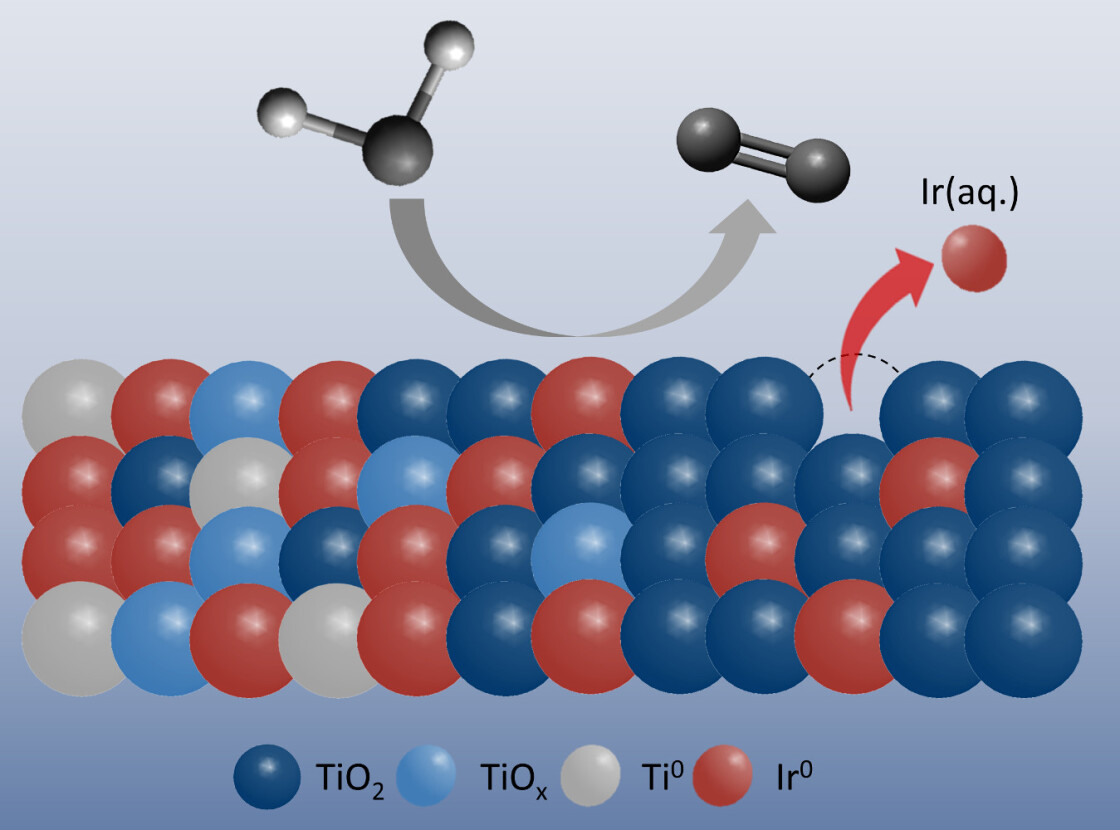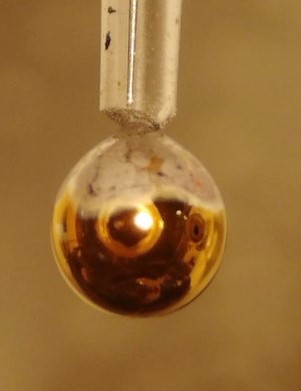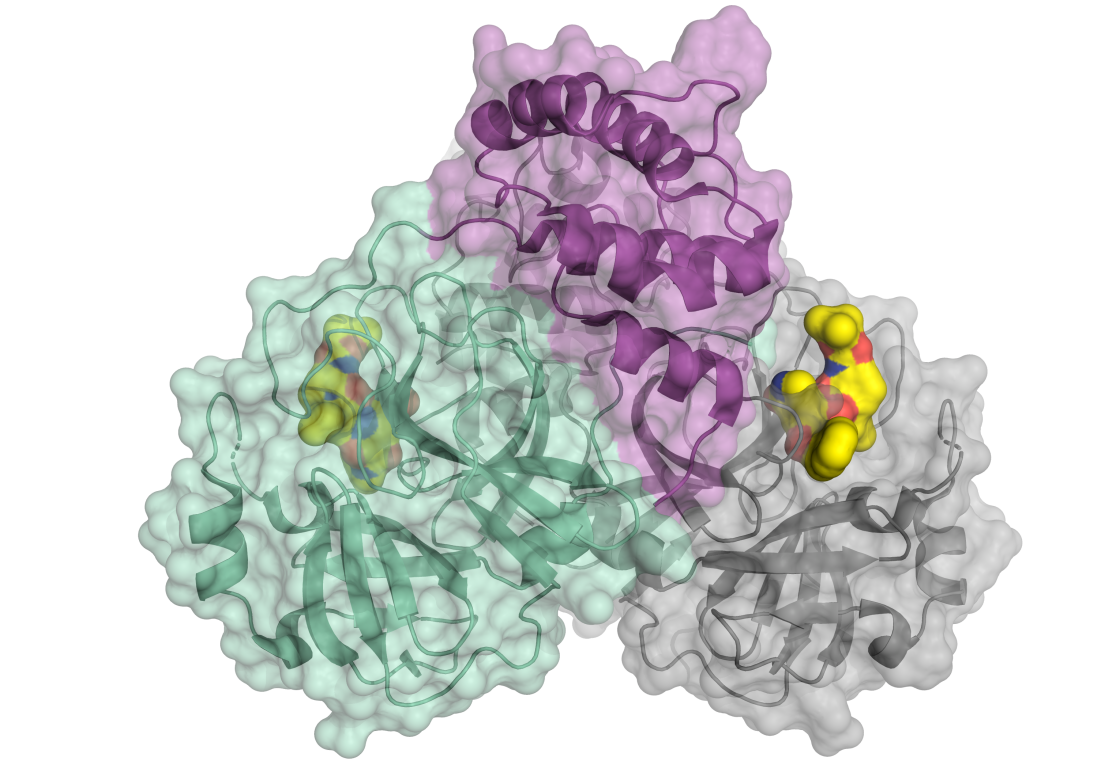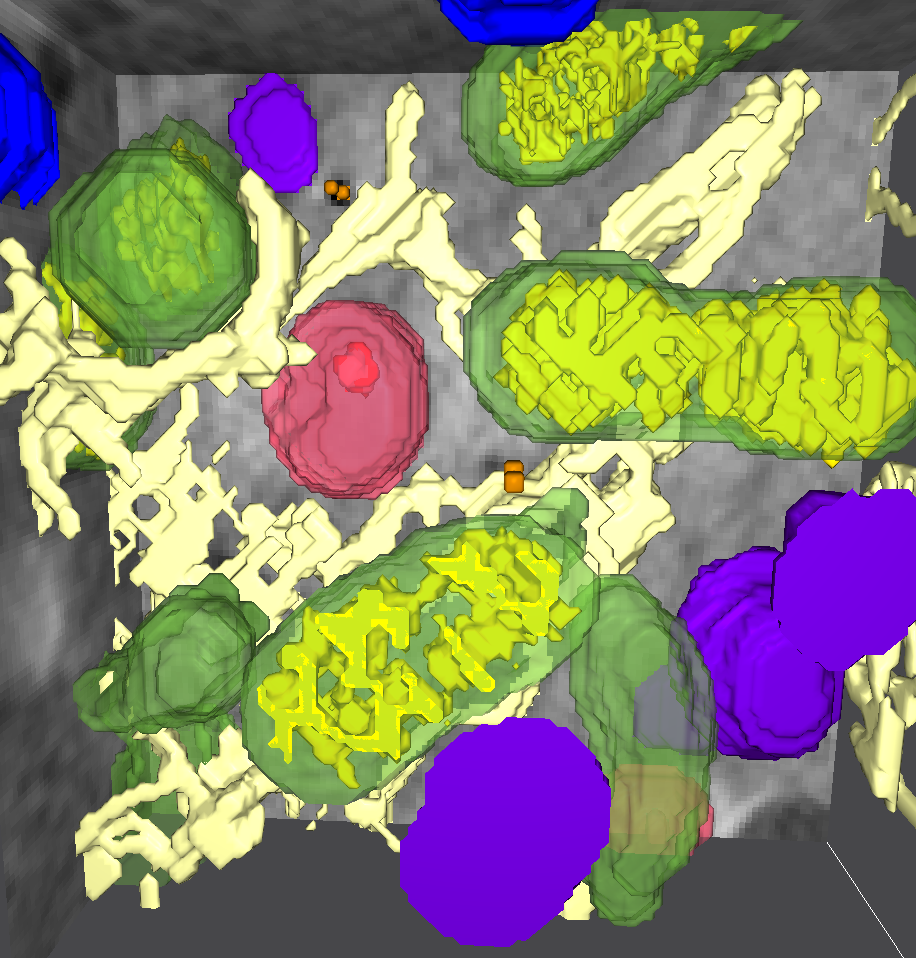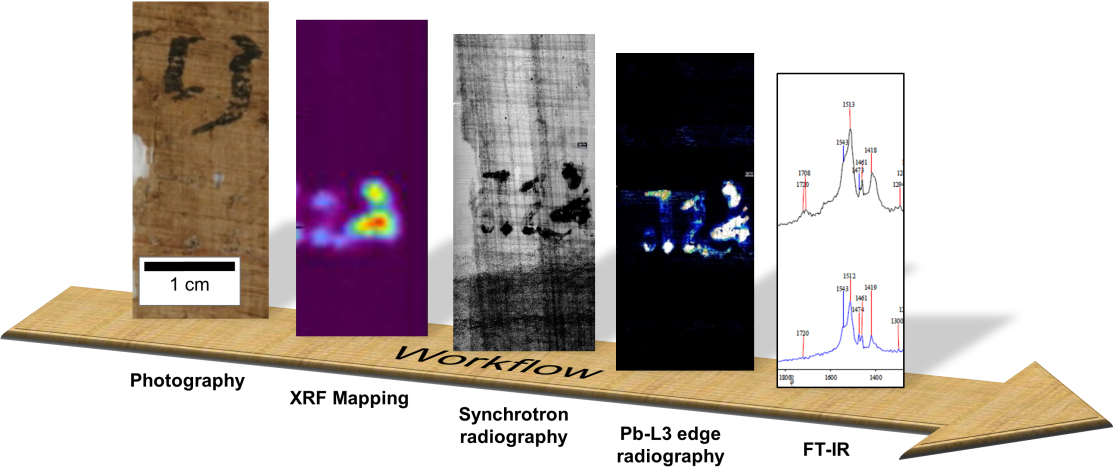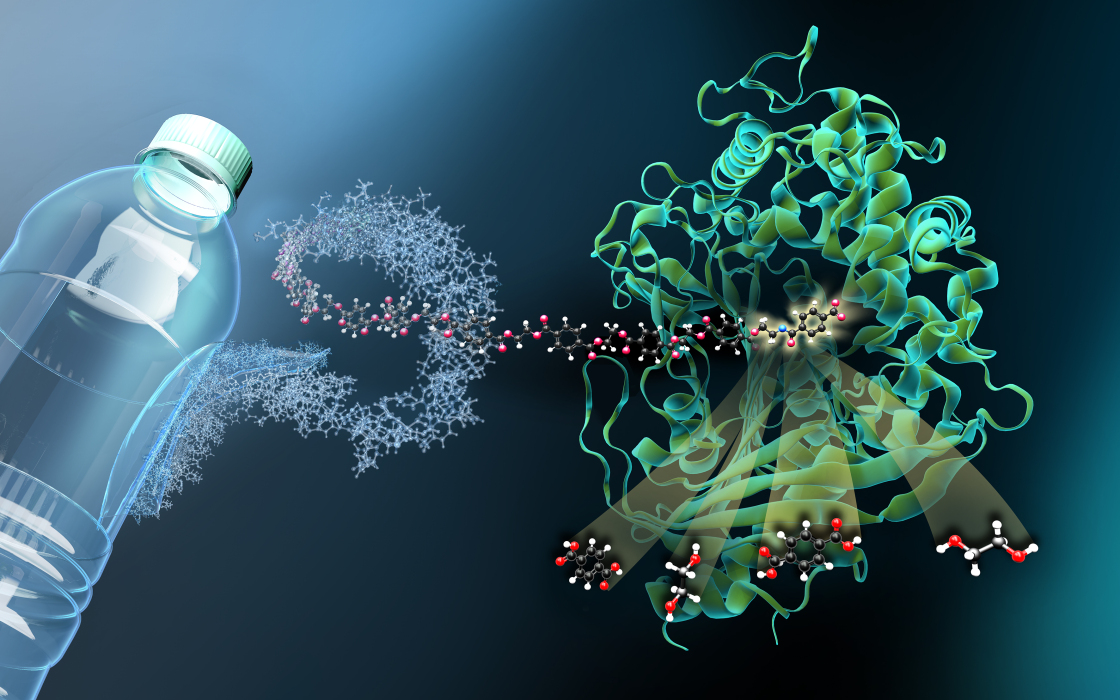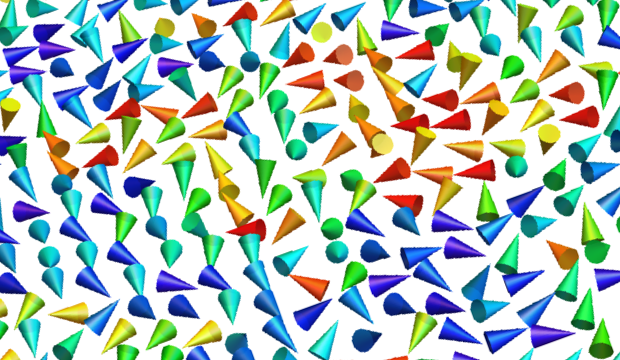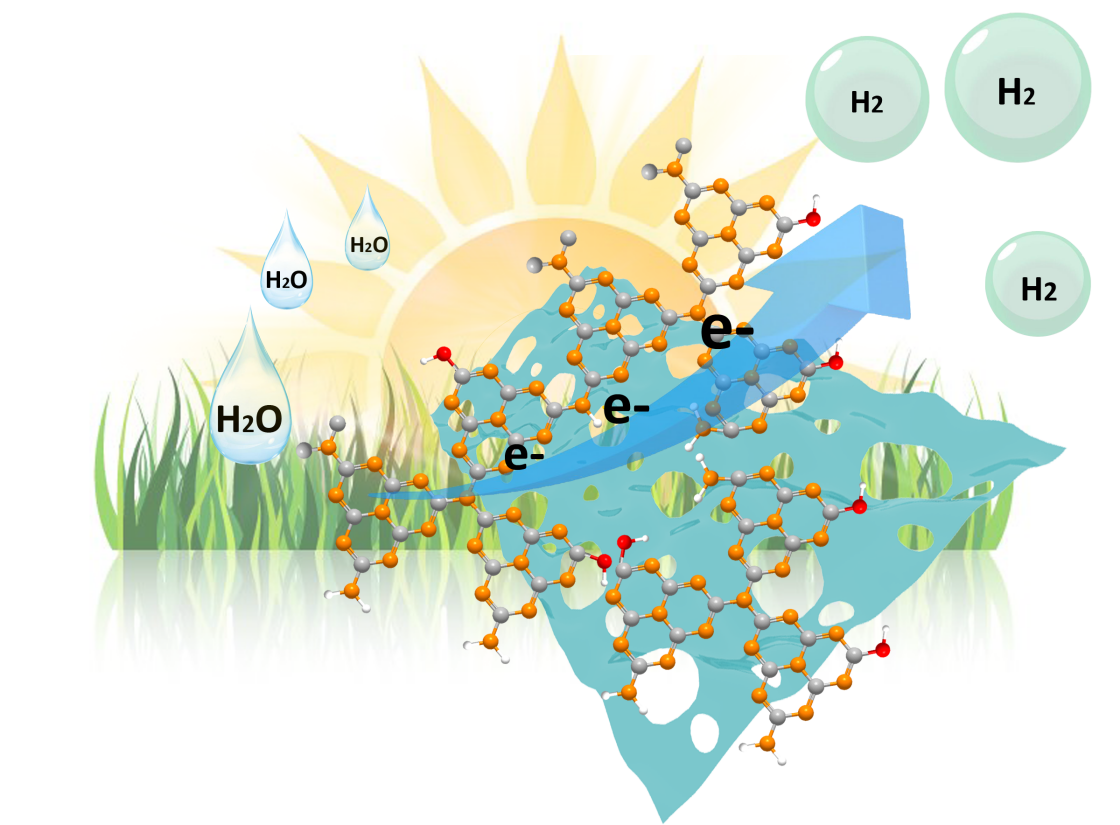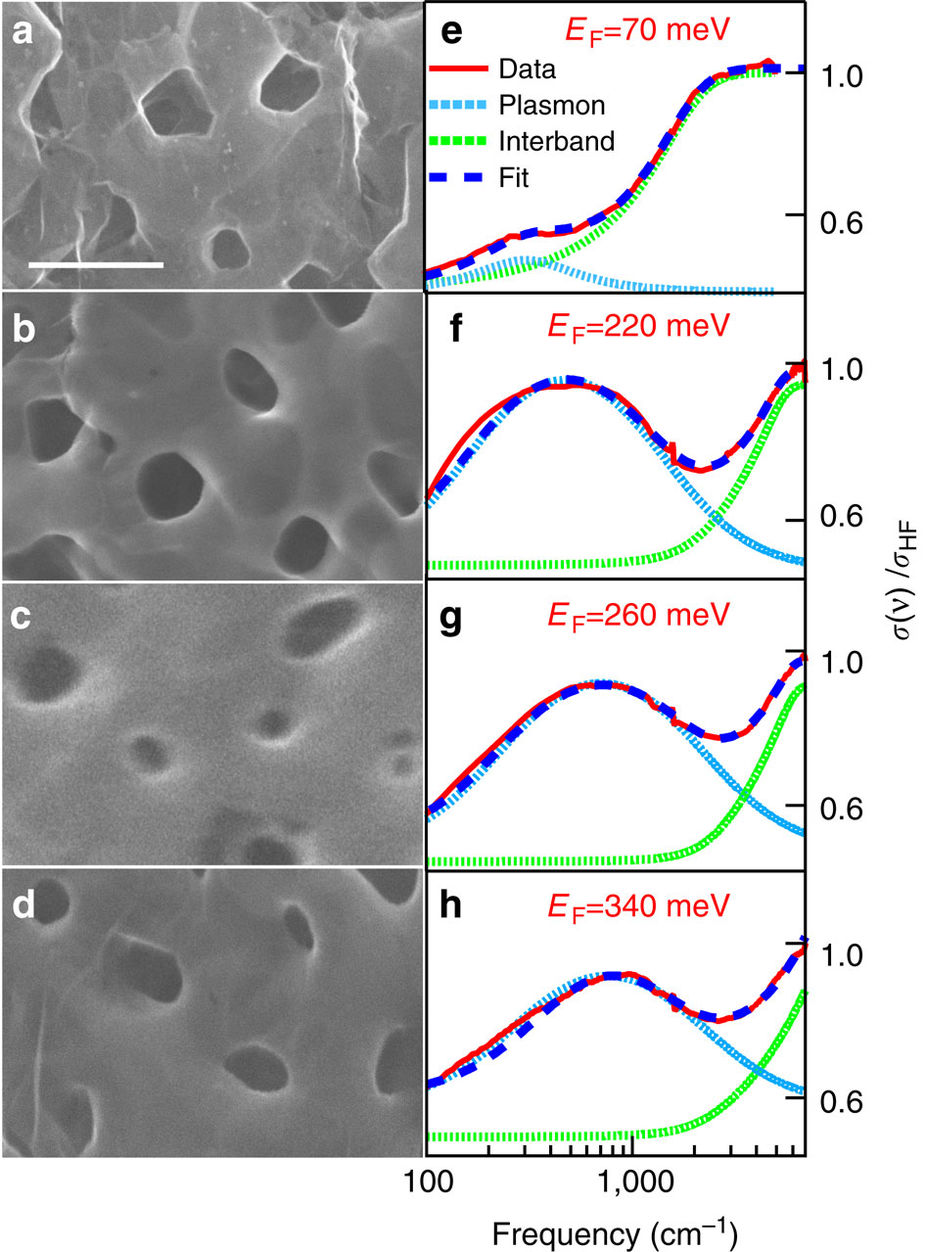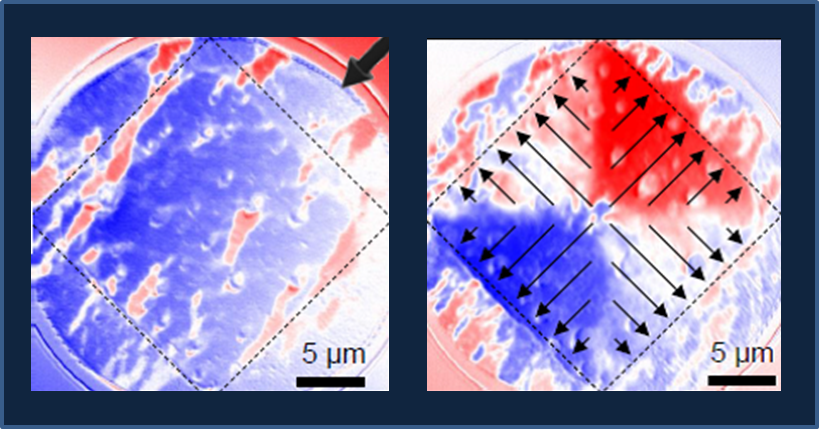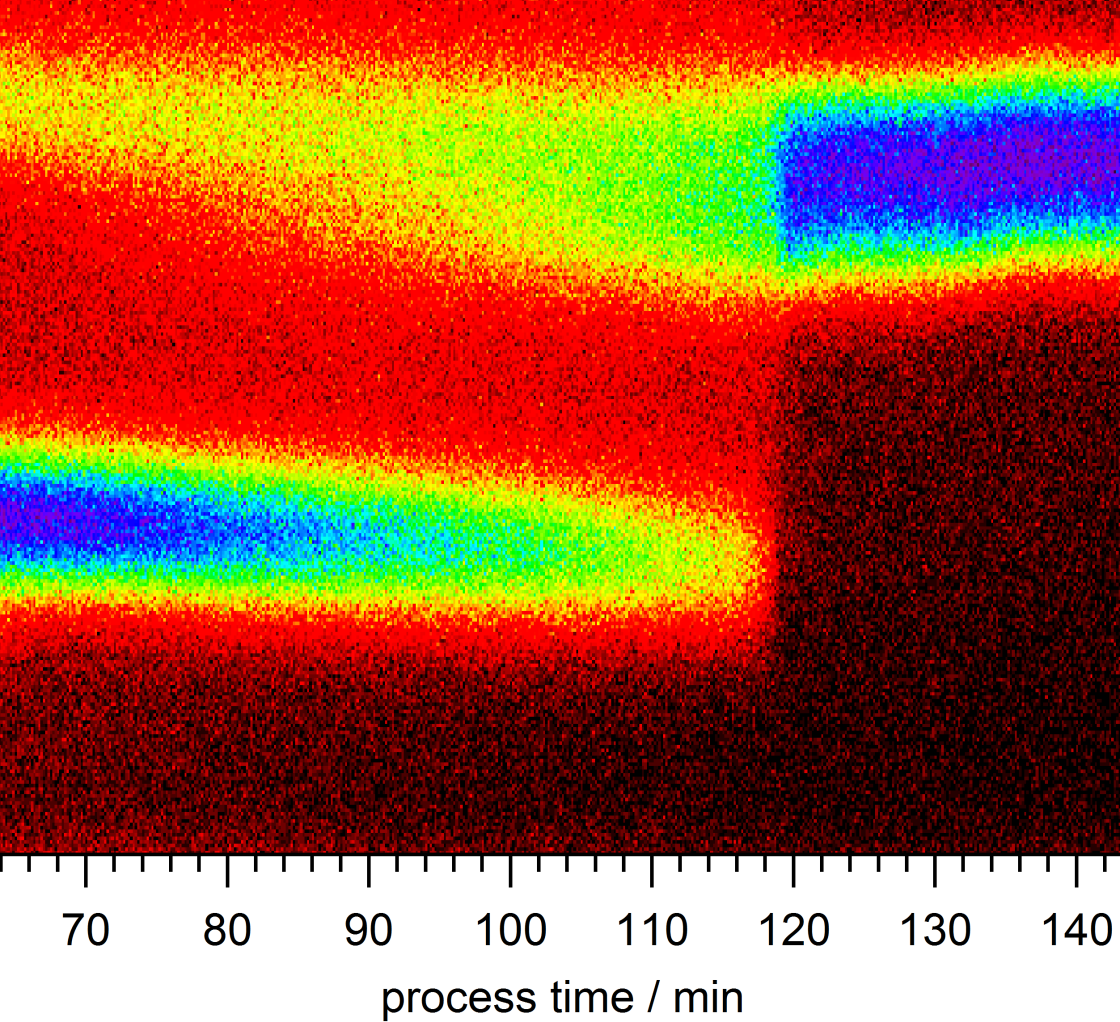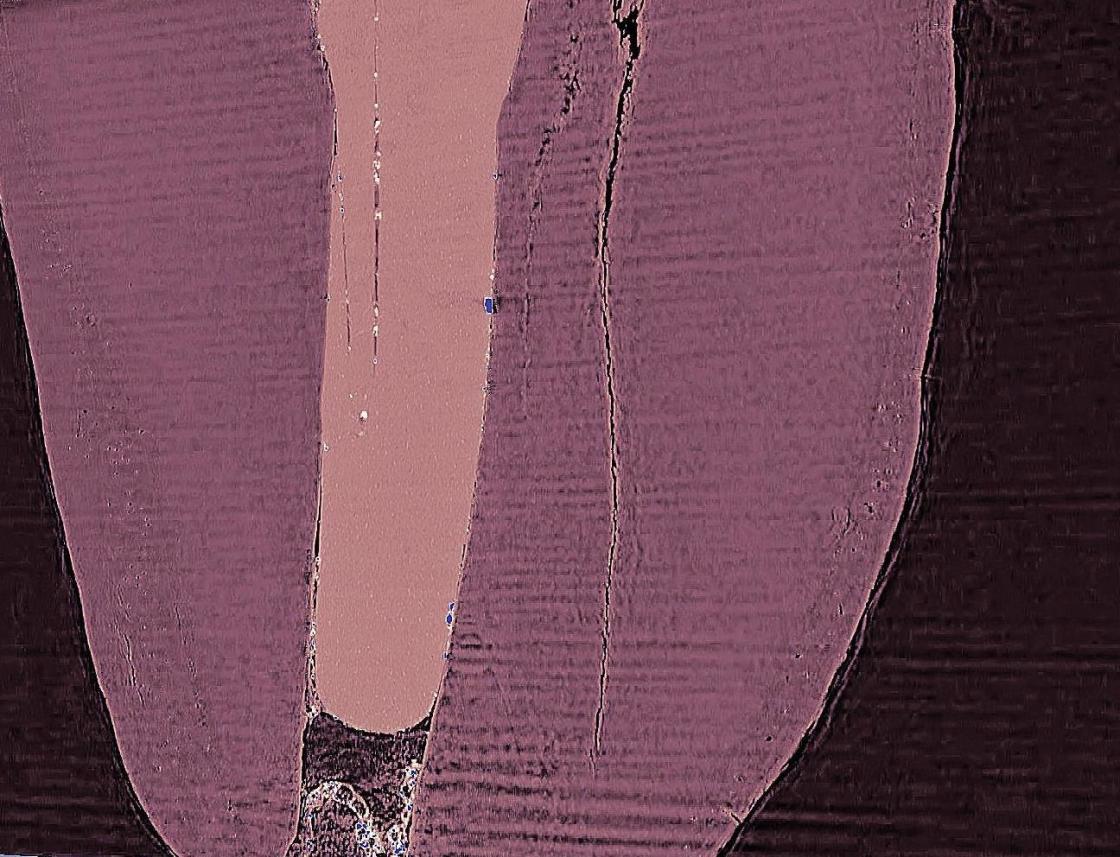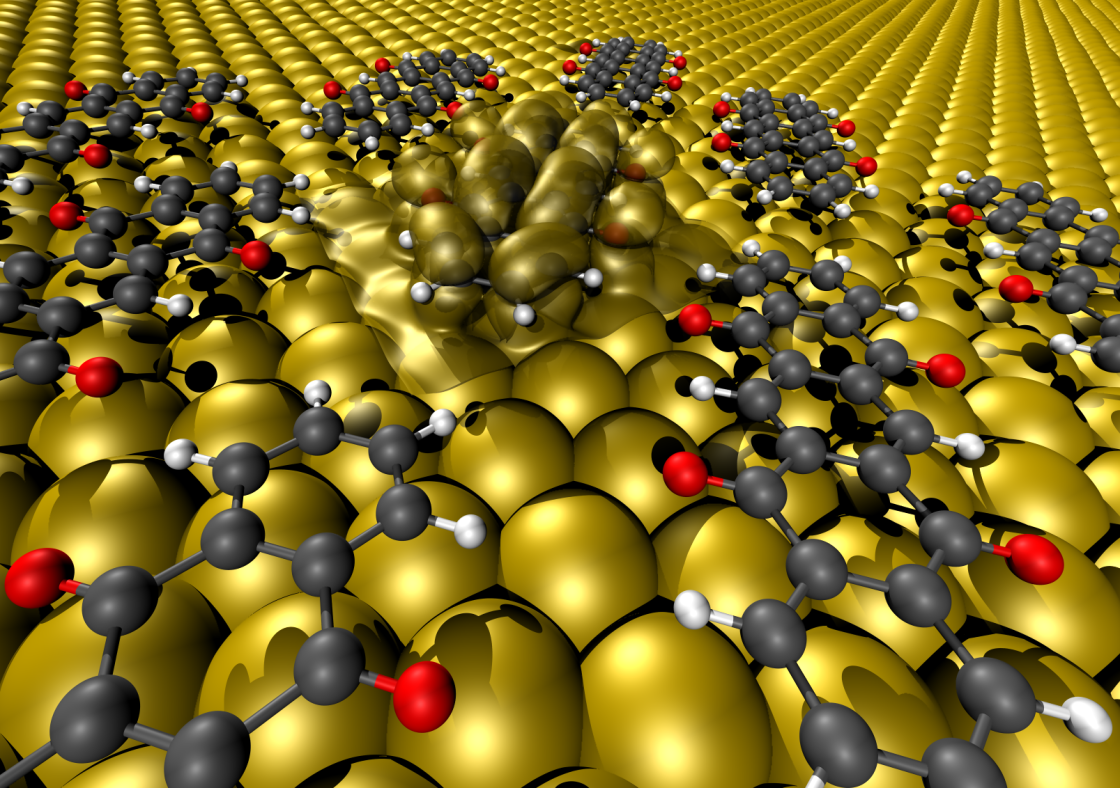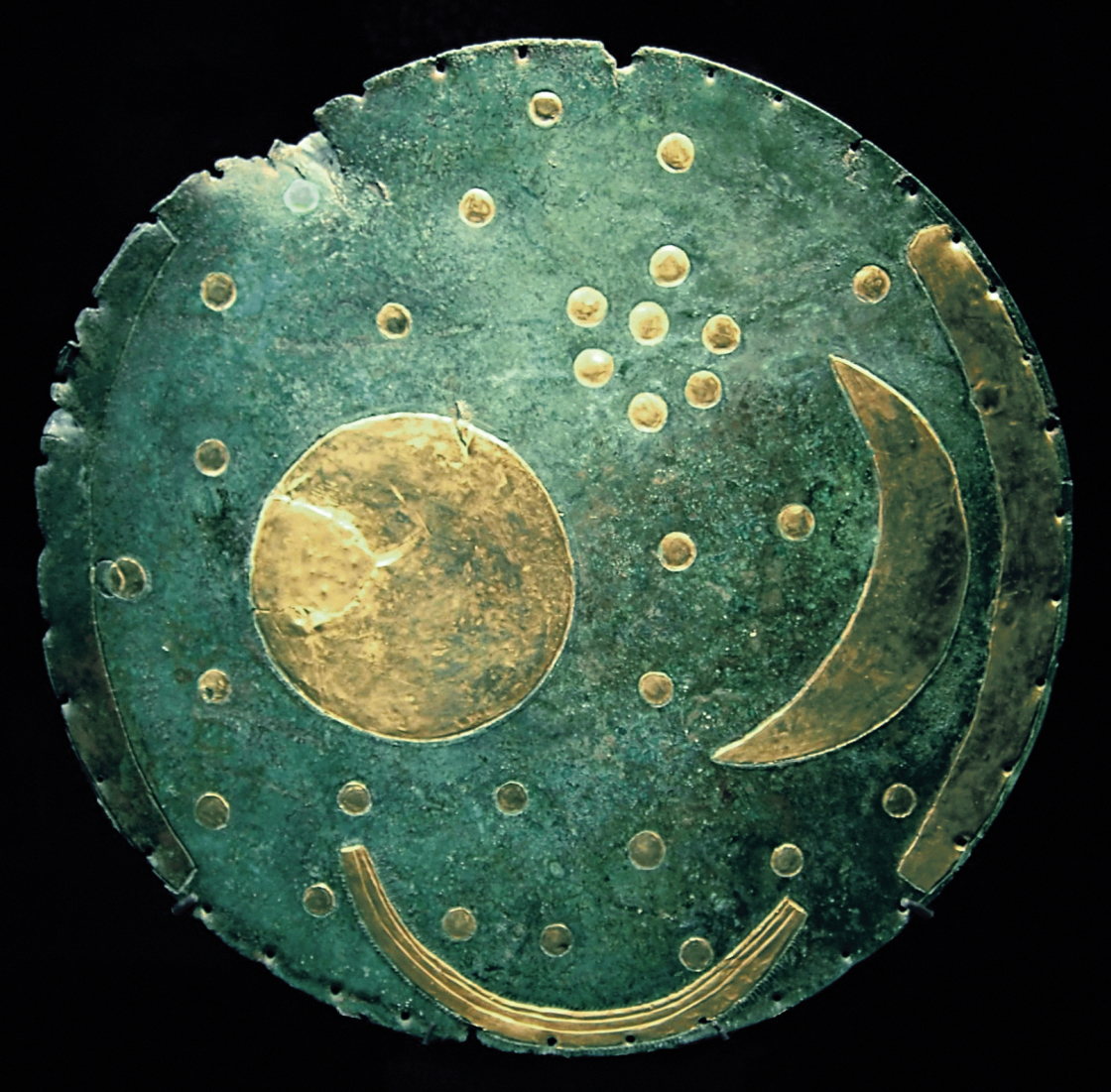Research Highlights: From the beginning until today
Gaining knowledge for more than 25 years
2024: Green hydrogen: MXenes shows talent as catalyst for oxygen evolution
The MXene class of materials has many talents. An international team has now demonstrated that MXenes, properly functionalised, are excellent catalysts for the oxygen evolution reaction in electrolytic water splitting. They are more stable and efficient than the best metal oxide catalysts currently available. The team is now extensively characterising these MXene catalysts for water splitting at the Berlin X-ray source BESSY II.
2024: Spintronics: A new path to room temperature swirling spin textures
A team at HZB has investigated a new, simple method at BESSY II that can be used to create stable radial magnetic vortices in magnetic thin films. Samples consist of micrometer size islands made of the high-temperature superconductor YBCO on which a ferromagnetic compound is deposited. The team used the magnetic field generated by the superconducting structures to imprint certain magnetic domains on the ferromagnets placed on them, and the surface defects to stabilize them.
2023: Green hydrogen: Improving iridium catalysts with titanium oxides
Anodes for the electrolytic splitting of water are usually iridium-based materials. In order to increase the stability of the iridium catalyst, a team at HZB and a group at HI-ERN have now produced a so-called material library: a sample in which the concentration of iridium and titanium oxides is systematically varied. Analyses of the individual sample segments at BESSY II in the EMIL laboratory showed that the presence of titanium oxides can increase the stability of the iridium catalyst significantly. > to the news
2023: How much cadmium is contained in cocoa beans?
Cocoa beans can absorb toxic heavy metals such as cadmium from the soil. Some cultivation areas, especially in South America, are polluted with these heavy metals, in some cases considerably. In combining different X-ray fluorescence techniques, a team at BESSY II has now been able to non-invasively measure for the first time where cadmium accumulates exactly in cocoa beans: Mainly in the shell. Further investigations show that the processing of the cocoa beans can have a great influence on the concentration of heavy metals. > to the news
2022: User research at BESSY II: Unveiling the secrets of biofilms
Most bacteria have the ability to form communities, biofilms, that adhere to a wide variety of surfaces and are difficult to remove. This can lead to major problems, for example in hospitals or in the food industry. Now, an international team has studied a model system for biofilms at BESSY II and found out what role the structures within the biofilm play in the distribution of nutrients and water.

D.N. Azulay, O. Spaeker, M. Ghrayeb, M. Wilsch-Bräuninger, E. Scoppola, M. Burghammer, I. Zizak, L. Bertinetti, Y. Politi, L. Chai, Multiscale X-ray study of Bacillus subtilis biofilms reveals interlinked structural hierarchy and elemental heterogeneity, Proc. Natl. Acad. Sci. U.S.A. 119 (4) e2118107119, https://doi.org/10.1073/pnas.2118107119 (2022). Picture: Liraz Chai/HUJI
2021: Water as a metal - detected at BESSY II
Under normal conditions, pure water is an almost perfect insulator. Water only develops metallic properties under extreme pressure, such as exists deep inside of large planets. Now, an international collaboration has used a completely different approach to produce metallic water and documented the phase transition at BESSY II. > to the news
2021: Lead-free perovskite solar cells - How fluoride additives improve quality
Tin halide perovskites are currently considered the best alternative to their lead-containing counterparts, which are, however, still significantly less efficient and stable. Now, a team from HZB has analysed the chemical processes in the perovskite precursor solution and the fluoride compounds in detail. Using a clever combination of measurement methods at BESSY II and with NMR at the Humboldt-University Berlin, they were able to show that fluoride prevents the oxidation of tin and leads to a more homogeneous film formation with fewer defects, increasing the quality of the semiconductor layer. > to the news
2020: Coronavirus SARS-CoV2: BESSY II data accelerate drug development
SARS-CoV-2 is highly infectious and can cause severe pneumonia with respiratory distress (COVID-19). Using the high-intensity X-ray light from the Berlin synchrotron source BESSY II, a team has decoded the three-dimensional architecture of the main protease of SARS-CoV-2. This protein is involved in the reproduction of the virus. Analysing its 3D architecture allows the systematic development of drugs which inhibit the reproduction of the virus. > to the news
2020: X-ray microscopy at BESSY II: Nanoparticles can change cells
Nanoparticles easily enter into cells. New insights about how they are distributed and what they do there are shown for the first time by high-resolution 3D microscopy images from the lightsources BESSY II and ALBA. For example, certain nanoparticles accumulate preferentially in certain organelles of the cell. This can increase the energy costs in the cell. "The cell looks like it has just run a marathon, apparently, the cell requires energy to absorb such nanoparticles" says lead author James McNally. > to the news
2019: Archaeology at BESSY II: “Invisible ink” on antique Nile papyrus revealed
Researchers from the Egyptian Museum and Papyrus Collection, Berlin universities and Helmholtz-Zentrum Berlin studied a small piece of papyrus that was excavated on the island of Elephantine on the River Nile a little over 100 years ago. The team used serval methods including non-destructive techniques at BESSY II. The researchers’ work, reported in the Journal of Cultural Heritage, blazes a trail for further analyses of the papyrus collection in Berlin. > to the news
2019: 3D tomographic imagery reveals how lithium batteries age
Lithium batteries lose amp-hour capacity over time. Microstructures can form on the electrodes with each new charge cycle, which further reduces battery capacity. A team has now documented the degradation process of lithium electrodes in detail for the first time. They achieved this with the aid of a 3D tomography process using synchrotron radiation at BESSY II (HZB).

Materials Today (2018): "Advancing knowledge of electrochemically generated lithium microstructure and performance decay of lithium ion battery by synchrotron X-ray tomography". DOI: 10.1016/j.mattod.2018.11.003
2019: "Molecular scissors" for plastic waste
A research team from the University of Greifswald and Helmholtz-Zentrum-Berlin (HZB) has solved the molecular structure of the important enzyme MHETase at BESSY II. MHETase was discovered in bacteria and together with a second enzyme - PETase - is able to break down the widely used plastic PET into its basic building blocks. This 3D structure already allowed the researchers to produce a MHETase variant with optimized activity in order to use it, together with PETase, for a sustainable recycling of PET.
2019: Spintronics by “straintronics”: Superferromagnetism with electric-field induced strain
An international team led by HZB has observed at the HZB lightsource BESSY II a new phenomenon in iron nanograins: whereas normally the magnetic moments of the iron grains are disordered with respect each other at room temperature, this can be changed by applying an electric field: This field induces locally a strain on the system leading to the formation of a so-called superferromagnetic ordered state. This could reduce the energy needed to control magnetic memories thus contributing to a smaller carbon footprint of the IT sector.
2018: BESSY II sheds light on how the internal compass is constructed in magnetotactic bacteria
Bacteria exist in many shapes and with very different talents. Magnetotactic bacteria can even sense the earth’s magnetic field by making use of magnetic nanoparticles in their interior that act as an internal compass. Spanish teams and experts at Helmholtz-Zentrum Berlin have now examined the magnetic compass of Magnetospirillum gryphiswaldense at BESSY II. Their results may be helpful in designing actuation devices for nanorobots and nanosensors for biomedical applications. > to the news
2018: Efficiency of metal-free photocatalysts increased
Polymerous carbon nitrides make for good catalysts in the production of solar hydrogen. Using the soft X-ray light from BESSY II, researchers discovered what role nanostructures play in the process. They increased the efficiency of these affordable metal-free materials by a factor of eleven. > to the news
2017: Optical properties of 3D graphene
An international team at BESSY II studied for the first time the optical properties of three-dimensional nanoporous graphene, and showed that oscillations in the charge density can be precisely controlled. The results could allow the development of highly sensitive chemical sensors. > to the news
2016: New data storage: magnetic patterns in thin films
Researchers have found a way to produce exotic magnetic patterns like monopoles or vortexes in thin magnetic layers. At BESSY II, they mapped the magnetic domains within an iron-nickel film. The material is considered a candidate for future magnetic storage media. > to the news
2016: Defects in chalcopyrite solar cells
Researchers achieved an important result at BESSY II for optimising thin-film solar cells made of copper, indium, gallium, sulphur and selenium. They observed defects arising during deposition and showed that many defects disappear again on their own during the transition from the copper-poor phase to the copper-rich phase.
2016: Testing hall EMIL Laboratory is opened at BESSY II
2016: Topping-out ceremony for bERLin-Pro
2015: Technical design study BESSY VSR
2015: Meteorites reveal details about our early solar system
Geologists studied samples of a pallasite meteorite at BESSY II. They identified tiny particles that had aligned themselves magnetically in an early phase of the solar system. The meteorite had thus saved data, so to speak, about our early solar system like a hard drive.
2014: What are the consequences of a root canal treatment?
On the BAM beamline at BESSY II, dentists analysed molar teeth before and after filing out the tooth root. Their findings: micro-cracks that had been detected in the tooth after filing were already visible beforehand and were not attributable to the treatment. > to the news
2014: New treatment concept against cancer
A Swedish team discovered a new treatment approach against cancer. It blocks the enzyme MTH1, which cancer cells need to survive – but normal cells don’t. They decrypted the enzyme structure at BESSY II and obtained valuable information for developing active substances that will block the enzyme. > to the news
2013: Concept study for the upgrade from BESSY II to BESSY VSR
2012: Graphene on nickel
Graphene consists of carbon atoms connected in a single layer to form a flat hexagonal lattice. Graphene is also highly conductive. If graphene is deposited onto nickel, it develops distortions in the lattice. The electrons of graphene behave more like light and less like particles, studies at BESSY II have shown. This mechanism is of great interest for practical applications. > to the news
2012: Fungi as weather makers in the rainforest
In rainforests, organic vapours and salts are responsible for the formation of fog and clouds. A team at BESSY II studied aerosol particles from the Brazilian rainforest. They showed that these particles contain potassium salts, which fungi and plants exhale, and thus appear to influence the formation of clouds. > to the news
2012: Viking treasure from Oseberg
At BESSY II, Norwegian conservators studied a rapidly disintegrating wooden wagon from a Viking grave near the fjords of Oslo. It had been previously treated with alum, which had since greatly modified the wood fibres. The results are a help in finding new preservation methods for saving such cultural treasures. > to the news
2012: BESSY II is converted to top-up mode
2012: FEMTOSPEX upgrade
2011: Proof of first viruses in Earth’s history found in dinosaurs
In a 150-million-year-old dinosaur vertebra, researchers found the first signs of viruses in Earth’s history. Synchrotron holotomography at BESSY II showed pathogenic changes in the vertebra that are evidence of Paget’s disease of bone. It is triggered by measles-like viruses. > to the news
2011: Ultra-fast magnetic reversal
At BESSY II, a team observed a new effect in an alloy of gadolinium, iron and cobalt. Using ultrafast light pulses, they showed that the magnetic alignment of the iron atoms reverses five times faster than that of gadolinium. This results in short-term strong magnetisation, and could speed up data processing. > to the news
2011: The LINAC pre-accelerator is installed
2010: Deep insight into the details of a cell
With an X-ray microscope newly developed at HZB, individual cells of mammals can be non-destructively imaged in high-resolution 3D – even in their natural environment. This picture shows the cancer cell of a mouse with details like the cell nucleus and membrane channels. > to the news
2010: The MX Lab for Protein Crystallography is founded
2009: BESSY II is integrated into the Helmholtz Association and merges with the Hahn- Meitner-Institut to form the Helmholtz- Zentrum Berlin für Materialien und Energie HZB
2005:First suggestions for BESSY VSR
2005: First femtoslicing experiment with ultra-short X-ray pulses
2003: The Nebra Sky Disk
The sky disc discovered in 1999 dates from the early Bronze Age. Researchers took a closer look at it at the BAMline at BESSY II. They found that three different gold alloys were used to shape the disc in several working steps. This also allowed conclusions to be drawn about the change in beliefs 4000 years ago.

